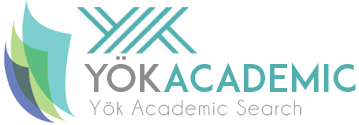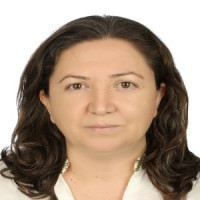Research Article
Review Article
Book Reviews
Issue Reviewers







 Web
Web
2000 yılında Marmara Üniversitesi İlahiyat Fakültesi’nden mezun oldu. 2003 yılında
“Çocuk Hikâye Kitaplarındaki Dinî ve Ahlâkî Motiflerin Din Eğitimi Açısından
Değerlendirilmesi (1908-1918)” tez konusuyla yüksek lisansını; 2012 yılında da
“Tanzimat’tan Cumhuriyet’e Mekteplerde Ahlâk Eğitim ve Öğretimi” tez konusuyla
doktora çalışmasını tamamladı. 2006-2016 yıllarında MEB’e bağlı farklı okullarda
öğretmenlik yaptı. 2016-2018 yılları arasında Düzce Üniversitesi'nde
öğretim üyesi olarak çalıştı. 2018'den beri 29 Mayıs Üniversitesi İlahiyat
Fakültesinde görev yapmaktadır. Başlıca çalışma alanları ahlak eğitimi, ailede din eğitimi, dini
gelişim ve erken çocukluk din eğitimidir.

Gazi Üniversitesi Eğitim Fakültesi Fen Bilgisi Öğretmenliği mezunu olan Nuhoğlu, aynı bölüm ve üniversitede yüksek lisansını ve doktorasını tamamlamıştır. Nuhoğlu’nun doktora tezi, Türkiye’de Sistem Dinamiği Yaklaşımının eğitim alanında uygulanmasına yönelik ilk doktora tezi niteliği taşımaktadır. 2002 yılında başladığı akademik çalışmalarına, halen Maltepe Üniversitesi Matematik ve Fen Bilimleri Bölümünde öğretim üyesi olarak devam etmektedir.
Eğitimde Sistem Düşüncesi & Sistem Dinamiği Yaklaşımı, Fen Öğretiminde Öğrenme & Öğretme Yöntemleri, Alternatif Okul Öncesi Eğitim Programları, Okul Öncesi ve Özel yetenekli öğrencilere yönelik disiplinlerarası fen, doğa ve teknoloji öğretimi ile ilgili ulusal ve uluslararası yayınları olmakla birlikte bu alanda bazı projelerde aktif olarak görev almaktadır. Maltepe Çocuk Üniversitesi kurucu üyesi olup, “Doğada STEM” atölyeleri yürütmektedir. Özel yetenekli çocukların eğitimine yönelik disiplinlerarası fen öğretim programları tasarlamaktadır. Eğitimde Sistem Düşüncesi Derneği (SD) üyesidir. Doğanın en iyi öğretmen olduğuna inanan Nuhoğlu doğada her yaştan çocuk ve yetişkinlerle buluşarak öğrenme yolculuğuna devam etmektedir. Evli ve Özgür & Yağmur isminde iki çocuğu vardır. Kamp kurmayı, keşif yapmayı, bildiklerini-yeni öğrendiklerini paylaşmayı çok sever, işbirliğine çok önem verir.

Dr. Ramazan ERTÜRK, 1999 yılında Abant İzzet Baysal Üniversitesi Sınıf Öğretmenliği bölümünü kazanmış ve bu bölümden 2003 yılında mezun olup sınıf öğretmeni olarak Kastamonu iline atanmıştır. Sırasıyla Kastamonu, Düzce ve Bolu illerinde görev yapmıştır. Bu süreçte müdür yetkili öğretmenlik, müdür yardımcılığı ve öğretmenlik görevlerinde bulunmuştur. 2014 yılında Bolu Abant İzzet Baysal Üniversitesi Eğitim Bilimleri Enstitüsü Eğitim Bilimleri Ana Bilim Dalı Eğitim Yönetimi ve Denetimi Bilim Dalında Tezli Yüksek Lisansını, 2021 yılında Bolu Abant İzzet Baysal Üniversitesi Lisansüstü Eğitim Enstitüsü, Eğitim Bilimleri Anabilim Dalı, Eğitim Yönetimi ve Denetimi Bilim Dalında Doktora Programını tamamlamıştır.



Aim & Scope
Istanbul Education Journal (ISTJ)
"Know the past, understand the present, prepare for the future!"
ISSN: 3023-7645
Subject Category: Education
Subheadings:
Educational Programs and Instruction: Values Education, Readiness in Education, Program Evaluation in Education, Program Development in Education, Philosophical and Social Foundations of Education, Psychological Foundations of Education, Lifelong Learning, In-Service Education, Informal Learning, Comparative and Intercultural Education, Out-of-School Learning, Program Design, Adult Education, Multicultural Education, Learning Theories, Instructional Theories, Instructional Design, Instructional Technologies, Teacher Education and Professional Development of Educators, Curriculum and Instruction (Other)
Educational Management, Inspection, Planning and Economics: Educational Planning, Educational Management, Educational Supervision, Educational Leadership, Inspection and Planning, Educational Management, Inspection, Planning and Economics (Other)
Studies on Education: Educational Policy, Educational Technology and Computing, Inclusive Education, Learning Analytics, Learning Sciences, Teacher and Student Wellbeing, Studies on Education (Other)
Measurement and Evaluation in Education: Measurement Theories and Applications in Education and Psychology, Intercultural Comparisons of Education: International Exams, Intercultural Scale Adaptation, Classroom Measurement Applications, National and International Achievement Comparisons, Scale Development, Measurement and Evaluation in Education (Other)
Science and Mathematics Fields Education: Biology Education, Science Education, Physics Education, Chemistry Education, Mathematics Education, STEM Education, Science and Mathematics Fields Education (Other)
Vocational Education and Training: Vocational Education, Vocational Education and Training (Other)
Guidance and Psychological Counseling: Career Counselling, School Psychological Counselling, Psychological Counseling Training, Guidance and Psychological Counseling (Other)
Art Education: Fine Arts Education, Media and Communication Education, Museum Education, Creative Drama Education, Art Education (Other)
Basic Education: Preschool Education, Classroom Education, Primary Education, Basic Education (Other)
Turkish and Social Sciences Education: Geography Education, Religious Education, Philosophy Education, Psychology Education, Social Studies Education, Sociology Education, History Education, Turkish Language and Literature Education, Turkish Education, Turkish and Social Sciences Education (Other)
Special Education and Disabled Education: Visually Impaired Education, Speech Impaired Education, Autistic Children Education, Autism and Spectrum Disorder Education, Mental Disability Education, Multiple Disability Education, Special Talented Education, Hearing Impaired Education, Special Education and Disabled Education (Other)
Author Guidelines
Main Sections of an Article
In the ethical statement section, authors must state they have followed all ethical rules while conducting the study. If artificial intelligence technologies were used in preparing the study, it must be clearly stated which functions of these technologies were used, at which stages of the research, and to what extent. If the article is presented as a part of a master's thesis, doctoral thesis, or a different comprehensive research/project, the title of the relevant thesis/research/project must also be stated. It must be stated whether article has previously been submitted to congresses, symposiums, etc. (see ISTJ Word Template page 9-10). The ISTJ Ethical Statement Form signed by authors must be added to the ISTJ process file. Click for the ISTJ Ethical Statement Form.
Ethics Committee Approval
The ethics committee approval section must provide necessary information regarding the ethics committee's decision on the article (e.g., the date and number of the document and the university to which the ethics committee is affiliated). The original document must be added to the ISTJ process file (see ISTJ Word Template page 10).
If the ethics committee approval is not required for the article, the reason for this must be clearly stated in this section. In addition, the author must sign the ISTJ Declaration of No Need for Ethics Committee Approval Form, which confirms that the article does not require the ethics committee approval. Click for the ISTJ Statement of No Need for Ethics Committee Approval Form.
Conflict of Interest Statement
In the conflict of interest section, if the article consists of more than one author, authors must state that they do not have any conflict of interest among themselves. However, it must be stated in this section that there is no situation affecting the objectivity of the authors in favor of or against any person or institution (see ISTJ Word Template page 10). The ISTJ Conflict of Interest Form signed by authors must be added to the ISTJ process file. Click for the ISTJ Conflict of Interest Form.
Author Contribution Statement
In an article with more than one author, all the authors must transparently state the extent of their support for the article (see ISTJ Word Template page 10-11). The ISTJ Author Contribution Statement Form signed by authors must be added to the ISTJ process file. Click for the ISTJ Author Contribution Statement Form.
Statement of Support and Acknowledgment
In the Support and Acknowledgment section, if the article is supported by an institution (BAP Project, TÜBİTAK Project, etc.), the project's name, project number, and completion date must be written. If the article does not contain any support or acknowledgment institution, person, etc., "We do not express any support or acknowledgment for our research." must be written (see ISTJ Word Template page 11).
Article Types
Article Formatting
Ethical Principles and Publication Policy
ISTJ Ethical Principles
Ethical Principles and Responsibilities for the ISTJ Authors
Authors who submit articles to ISTJ are expected to comply with the following ethical principles and responsibilities:
1.All the article data submitted by authors to ISTJ for review must be accurate and original.
2.Authors must fully and accurately cite their references in the article. All the responsibility for similarity belongs to the authors. The similarity rate is expected to be less than 15%. Authors must know the rules of citation and comply with these rules (see APA 7 reference indication). Even if the similarity rate is 1%, plagiarism may occur if the authors do not obey the citation rules. Therefore, citation rules must be known by authors and applied carefully. If any plagiarism is detected, the article will be rejected. ISTJ reserves the right to apply additional sanctions for plagiarized authors and articles.
3.The article submitted to ISTJ for the publication must not have been previously published or submitted for publication elsewhere.
4.Since authors cannot submit their articles to more than one journal's application process at the same time, each application must be started after the previous one is completed.
5.The studies previously presented at congresses and symposiums and only the published abstract may be accepted to ISTJ, provided that this is stated.
6.If the article is presented as part of a master's thesis, doctoral thesis, or other comprehensive research projects, the title of the relevant thesis/research/project must also be stated.
8.When authors are requested to provide raw data regarding their articles within the review process, the relevant data must be forwarded to editors or referees.
9.Authors cannot withdraw articles whose peer-review process has been completed positively and which are queued for the publication.
10.Authors must give feedback for corrections by making the corrections at the specified time or by stating their objections to the correction, if any. Authors who do not comply with the deadlines set for themselves may be given additional time only once, to the extent deemed appropriate by the relevant editor. If authors do not complete the necessary corrections during this additional period, they will be deemed to have withdrawn their articles from the journal.
11.No copyright is paid to the article sent to ISTJ. The copyright of the published article belong to the author. Authors authorize ISTJ to publish the article and identify it as the original publisher. Authors grant any third party the right to freely use the article if original authors and citation details are identified. The signed ISTJ Copyright Agreement Form must be added to the ISTJ process file. Click for the ISTJ Copyright Agreement Form.
14.In conflict of interest section, authors must state that they do not have any conflict of interest among themselves and that no situation affects their objectivity for or against any person or institution. The signed ISTJ Conflict of Interest Form must be added to the ISTJ process file. Click for the ISTJ Conflict of Interest Form.
15.In studies with more than one author, authors must transparently state the extent of their support for the article. Contributing to the conception, design, analysis and interpretation of the article; providing support to the article not only in terms of spelling and grammar, but also in terms of intellectual and academic content, and finalizing the article before sending it for review are prerequisites that an author must fulfill in order to be written as an author of the article. The names of those who do not meet one or more of these conditions must not be written as authors in the article. The signed Author Contribution Statement Form must be added to the ISTJ process file. Click for the ISTJ Author Contribution Statement Form.
Ethical Principles and Responsibilities for the ISTJ Editor-in-Chief, the ISTJ Assistant Editor,
the ISTJ Copy Editors and the ISTJ Subject Editors
The Editor-in-Chief, the Assistant Editor, the Manuscript Editors and the Subject Editors working for ISTJ are expected to comply with the following ethical principles and responsibilities:
1.The Editor-in-Chief is primarily responsible for creating a quality journal for teachers, principals, and researchers to publish their academic studies and making ISTJ a journal indexed in the national and international directories.
2.The Editor-in-Chief has full authority to decide whether an article must be sent to referees and referees to be assigned to the article.
3.The Editor-in-Chief is responsible for the content of the article. When necessary, he publishes a correction note or performs a retraction.
4.The Editor-in-Chief is responsible for maintaining and completing the peer-review process by scientific criteria and ethical principles.
5.The Editor-in-Chief , the Assistant Editor and the Subject Editors are responsible for fulfilling the requirements of the double-blind referee model.
6.The Editor-in-Chief, the Assistant Editor, the Manuscript Editors and the Subject Editors ensure the confidentiality of an article until it is published; this does not apply to the applications made to more than one place at the same time.
9.The Editor-in-Chief and the Subject Editors have the authority not to publish the article that does not comply with the publication conditions, to return it to the author for correction, or to edit it in format.
10.The Editor-in-Chief checks whether authors have made the corrections requested by editors and referees in an article. In case of corrections not made on time, authors may be given additional time or may return the article to authors.
11.The Editor-in-Chief accepts, rejects or requests changes to the article in line with the referee reports.
12.The Editor-in-Chief informs referees that an article is confidential and that this is a privileged interaction.
13.The Editor-in-Chief does not allow any conflict of interest among editors, authors and referees.
14.The Editor-in-Chief may appoint a third referee to review an article. In this case, The Editor-in-Chief may reject the article, give a minor or major revision, or mark the acceptance decision, depending on the third referee's review.
16.After the ISTJ Language Editors complete the review of the article, the Editor-in-Chief submits it to the ISTJ Editorial Board for the publication decision.
18.The Editor-in-Chief puts the completed articles in a queue according to the article acceptance date and the first current issue of different sub-topics to be published in ISTJ and publishes the following article.
Responsibilities for the ISTJ Statistical Editor
The ISTJ Editor-in-Chief assigns the ISTJ Statistical Editor while the article is at the preliminary review stage before it goes to referees. The ISTJ Statistical Editor reviews the method of the article, the statistical tests used, and the statistical analysis findings and requests raw data tables from authors when necessary. For an article to be sent to referees at ISTJ, it is mandatory to check the statistical test methods, findings, and comments. If the ISTJ Statistical Editor finds the relevant article statistically insufficient or erroneous, he sends it to authors to correct this inadequacy and error. After authors make the edit, the ISTJ Statistical Editor makes his decision based on the result of the edit.
ISTJ Refereeing Process
Qualified articles that are original, up-to-date, and thought to contribute to the field within the scope of ISTJ topics are accepted at ISTJ for preliminary review. Articles that are not original, up-to-date, within the scope of ISTJ topics, and are thought to be unsuitable for the ISTJ target audience may be returned to authors by the ISTJ Editor-in-Chief without prior review and without writing a reason for rejection. The ISTJ Editor-in-Chief has the authority to reject an article submitted to ISTJ without prior review.
The article submitted to ISTJ is first sent to the ISTJ Copy Editor to review its compliance with the ISTJ Article Writing Template. After the submitted article's compliance with the ISTJ Article Writing Template is approved by the ISTJ Copy Editor, the relevant article is sent to the ISTJ Editor-in-Chief or an ISTJ Subject Editor authorized by the ISTJ Editor-in-Chief who is familiar with the research topic of the article for a comprehensive review. At the same time, the ISTJ Editor-in-Chief sends the article to the ISTJ Statistical Editor to review the accuracy of the statistical test methods and statistical findings used in the article. The article, which receives a positive report from the control of the ISTJ Editor-in-Chief or the ISTJ Subject Editor and the ISTJ Statistical Editor, is then submitted to review two referees who have expertise in the subject and have at least a doctoral degree.
The refereeing process is carried out confidentially by the ISTJ Editor-in-Chief, the ISTJ Field Editor, or the ISTJ Assistant Editor authorized by the ISTJ Editor-in-Chief within the double-blind peer review model framework. Referees are requested to express their views and opinions about the article they have reviewed. Referees are asked to explain their positive or negative opinions about the article they have reviewed at least 100 words. Authors can object and defend their opinions if they disagree with referees' opinions. The ISTJ Editor-in-Chief ensures mutual communication between authors and referees while preserving confidentiality. If one of the two referees expresses a negative opinion, the article may be sent to a third referee for the decision of the ISTJ Editor-in-Chief, or it may be returned to the author without being sent to a third referee. Studies can be published with the positive decision of at least two referees. If both referee reports are positive, the article is sent to the control of the ISTJ Language Editor. After the ISTJ Language Editor checks the article, it is presented to the ISTJ Editorial Board by the ISTJ Editor-in-Chief with a proposal to consider publication. If the ISTJ Editorial Board approves the article's publication, the ISTJ Layout Editor lays out the article and prepares it for the publication. The final reading of the article, the completed layout, is done by the ISTJ Editor-in-Chief. After the final reading phase, the article is queued according to the submission date and the first current issue to be published in ISTJ, with different sub-topics being equally distributed, and the next article is published.
The ISTJ Editor-in-Chief does not allow conflicts of interest among authors, editors and referees. He has full authority to appoint referees. He ensures that referee reviews are objective. Referees assigned for the refereeing process ensure that the article contains new and important information; the body of the article clearly and neatly describes the content; the method has integrity and understandability; the discussion and conclusion can be proven with findings; there are a sufficient number of references in the research and the quality of the language used is good enough.
Ethical Principles and Responsibilities for ISTJ Referees
ISTJ expects referees taking part in the refereeing process to comply with the following ethical principles and responsibilities:
1.Referees must agree to evaluate only articles related to their expertise.
2.Referees must evaluate impartially and confidentially.
3.Referees are limited to intellectual and scientific content only when reviewing articles.
4.Referees must immediately inform the ISTJ Editor-in-Chief of any author misconduct.
5.Referees must not have any conflict of interest regarding the research, authors, and research funders. Their judgments must be objective.
6.Referees must ensure the confidentiality of all information regarding the articles they review until the article is published. If they notice that authors have committed copyright infringement or plagiarism, they must immediately report it to the ISTJ Editor-in-Chief.
7.Referees who feel they need to be more competent about the article's subject or who think they cannot review the article on time due to workload or various excuses must inform the ISTJ Editor-in-Chief about the issue and request not to be included in the refereeing process.
Responsibilities for the ISTJ Turkish and English Language Editors
The ISTJ Turkish and English Language Editors check the integrity of meaning and the accuracy of spelling rules and punctuation marks in the article that referees and the ISTJ Editorial Board have approved. They ask authors for corrections on these issues if there are any errors. For an article to be published in ISTJ, it is mandatory to check Turkish and English languages.
ISTJ Publication Policy
1.The articles that are not original, up-to-date, suitable for the ISTJ target audience, within the scope of ISTJ subjects, and do not contribute to the field are returned to authors by the ISTJ Editor-in-Chief without prior review and without writing a reason for rejection. The ISTJ Editor-in-Chief has full authority to reject an article submitted to ISTJ without prior review.
2.The qualified articles that are original, up-to-date, thought to contribute to the field within the scope of ISTJ subjects, and not previously published or under review in another journal for the publication are accepted at ISTJ for preliminary review.
3.The entire process of the articles is carried out only through the DergiPark system; other than this, no other communication methods are established with the authors.
4.All the responsibility for similarity belongs to the authors. The similarity rate is expected to be less than 15%. However, the main criterion in the similarity rate is that the authors know the rules of citation and comply with these rules. Even if the similarity rate is 1%, if the citation is not done in accordance with the rules, plagiarism may occur. Therefore, the citation rules must be known by the authors and applied carefully (see APA 7 reference system).
Within the scope of the cooperation between ISTJ, DergiPark, and intihal.net, a similarity report can be obtained free of charge for article applications. Accordingly, a similarity report is prepared, and authors are notified of the result by e-mail. When the result of the report is announced, the article submission process is completed.
5.Each article accepted for review is first scanned by the ISTJ Writing Editor once within a maximum of 7 days for compliance with the ISTJ Article Writing Template. If there are any deficiencies or errors in the article template, the responsible author is asked to correct these deficiencies and errors within 7 days at most. If the necessary changes are not made, the author may be given an additional 5 days. If the author does not make the necessary changes during this period, the article will be rejected and will not be processed again in the same publication period.
6.The article that complies with the ISTJ Article Writing Template is reviewed comprehensively by either the ISTJ Editor-in-Chief or an ISTJ Subject Editor with at least a PhD degree in the research topic of the research topic of the article in terms of originality, methodology, importance of the research topic, contribution to the field, and suitability for the scope of the journal. At the same time, the article is sent to the ISTJ Statistical Editor to determine the accuracy of the statistical test methods and statistical findings used in the article. This review is expected to be completed within 15 days. If the authors are requested to make any corrections at this phase, the authors and ISTJ Editors are given 15 days for each correction and the responsibilities of the procedures are expected to be fulfilled within this period. The article, which successfully passes the review of the the ISTJ Editor-in-Chief or the ISTJ Subject Editor and the ISTJ Statistical Editor, is then submitted to the review of two referees who have expertise in the subject and have at least a doctoral degree.
7.Articles that pass the preliminary review are reviewed by at least two referees with the double-blind peer review principle. According to the double-blind peer review principle, authors and referees do not know each other's identities. The ISTJ Editor-in-Chief ensures confidentiality throughout the refereeing process. However, after the article review process is completed, whether positive or negative, the names and institutions of the referees who actively participate in the review process are announced in the first issue to be published.
8.Referees are expected to complete their reviews within 30 days at the latest. If referees request corrections from the article they review, the relevant reports are sent to authors and the article is requested to be corrected as requested. Authors are expected to complete the corrections given to them within 15 days. Referees who want to see the correction are expected to approve the correction or send it back for correction within 15 days. It works like this until the peer review process is completed.
9.If one of the two referees rejects the article, the ISTJ Editor-in-Chief may send it to a third referee for review, depending on its current status and the reasoning of the referee who made the rejection decision, or may reject the article without sending it to a third referee and return it to the author. The article can be published with a positive decision from at least two referees.
10.The article whose referee process has been completed is reviewed by the ISTJ Turkish and English Language Editors within 10 days at the latest, and if necessary, the ISTJ Language Editors may request corrections from authors. In these corrections, the ISTJ Language Editors and the responsible author are given separate periods of 10 days each, and the process continues like this until it is completed.
11.The ISTJ Editorial Board makes the publication decision after referees accept the article and The ISTJ Language Editors complete their review. The members of the ISTJ Editorial Board may also provide corrections to authors.
15.A maximum of one study by the same author is published in the same issue.
16.All the articles that do not comply with ethical principles (plagiarism, forgery, distortion, duplication, false authorship/denied authorship, research/data fabrication, article slicing, publication by slicing, copyright violation, concealment of conflict of interest, other ethical violations) are removed from the publication. These include the unethical articles that can be detected later even after they are published.
17.Legal responsibilities arising from the content of the articles published in ISTJ belong entirely to the authors.
Price Policy
No fee is charged for articles published in Istanbul Education Journal (ISTJ).
Istanbul Education Journal (ISTJ) is licensed under .

